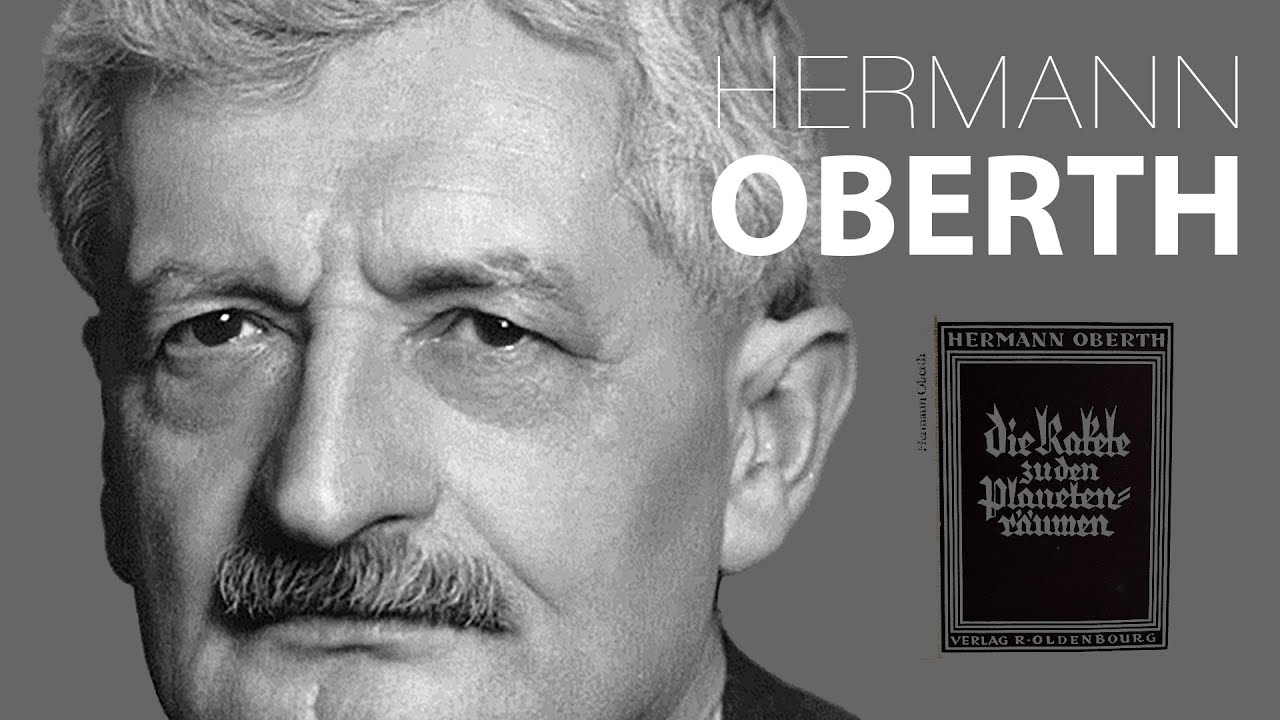He is one of the theoretical pioneers of rocket technology: Who is Hermann Oberth?
Founding fathers of rocketry and astronautics: In his work published under the name Die Rakete zu den Plane-tenraumen (“The Rocket Launched into Interplanetary Space”), he made predictions about the speed and height that rockets could reach and made mathematical calculations of the speed required to escape the Earth's gravity.

OBERTH, Hermann Julius (1894 – 28 December 1989)
German physics scientist. He is one of the theoretical pioneers of rocket technology.
He was born on June 25, 1894, in Hermannstadt in the Transylvania region (today Sibiu, Romania). Oberth, who left his medical education at the University of Munich and joined World War I in the Austro-Hungarian army, studied physics and mathematics at the universities of Munich, Göttingen, and Heidelberg after the war. In 1925, he started teaching high school in Mediaş (today in Romania). He conducted research on rocket construction at the Technical University of Vienna in 1938 and at the University of Dresden between 1940 and 1941. In 1941, he was assigned by the Nazi government to the Peenemunde rocket base on the Baltic Sea coast.
Hermann Julius Oberth (25 June 1894 – 28 December 1989) was an Austro-Hungarian-born German physicist and rocket pioneer of Transylvanian Saxon descent. He is considered one of the founding fathers of rocketry and astronautics, along with Robert Esnault-Pelterie, Konstantin Tsiolkovsky, Robert H. Goddard and Herman Potočnik (also known under the pseudonym Hermann Noordung). Oberth supported Nazi Germany's war effort and received the War Merit Cross (1st Class) in 1943.
Immediately afterward, he was appointed manager of a rocket-producing unit in a factory in Westphalia. After World War II, Oberth, who worked as a consultant in Switzerland for about a year and developed anti-aircraft rockets for the Italian navy between 1950 and 1955, went to the USA in 1955 upon the call of W von Braun and retired in 1958. He took part in space research carried out in the State of Alabama until he returned to Germany.
Oberth started his first theoretical studies in the field of rocket technology during World War I. At that time, American physics scholar Goddard had begun research on rockets that could reach sufficient speed and altitude, and in 1914 he patented the first liquid-fueled rocket engine. USSR mathematician Tsiolkovsky developed his theory of reaction speed and designed rockets fueled by liquefied hydrogen and oxygen.
In the years when he was not yet aware of the work of these scientists, Oberth attempted to make objects weightless by eliminating the effect of gravity and designed a long-range rocket powered by liquid fuel. In his work, which included this design, he submitted first to the Ministry of War and then to Heidelberg University as his doctoral thesis in 1922, but when it was not accepted, he published it under the name Die Rakete zu den Plane-tenraumen (“The Rocket Launched into Interplanetary Space”), in which he stated that rockets could reach He made predictions about speed and height and made mathematical calculations of the speed required to escape the Earth's gravity.
In Wege zur Raumschiffahrt (“Paths of Space Travel”), which he published in 1929, he explained his thoughts on the designs of giant liquid-fueled missiles suitable for interplanetary space flights, as well as the ion rocket, which was based on the principle of using electrical energy as the driving force in missiles. Oberth's predictions in this book, which won him the Esnault Pelterie-Andre Hirsch Award, were only realized thirty years later.
Oberth, who, in addition to working as a high school teacher in the 1930s, built and tested various liquid-fueled rockets with his own efforts, was also influential in the upbringing of young W von Braun during his rocket engine development studies, which he carried out together with members of the VfR (Verein für Raumschiffahrt-Space Travel Association) in Berlin.
During World War II, he participated in the construction of ground-to-ground V-I missiles, developed for the German Air Force, at the Peenemunde base under the management of his former assistant. 8m. long and weighing 5 tons, the V-Is had a range of approximately 225 km and were capable of carrying a warhead weighing 1 ton.
Oberth, who turned his attention to spacecraft designs in the post-war period, is considered, along with Goddard and Tsiol-kovski, among the theoretical pioneers of modern rocket technology that makes human space flights possible.
• WORKS (mainly): Die Rakete zu den Planetenrau-men, 1923, (“The Rocket Launched into Interplanetary Space”); Wege zur Raumschiffahrt, 1929, (“Ways of Space Travel”); Menschen im Weltraum, 1955, (“Men in Space”); Stoff und Leben, 1959, (“Matter and Life”).
